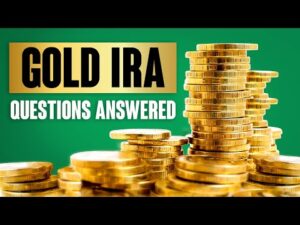
Ethereum's Trading Value and Market Overview
Ethereum is currently trading at $2,265, with a daily range of $2,170 to $2,310. It has a market capitalization of $272 billion and a robust 24-hour trading volume of $19.24 billion. Like many other cryptocurrencies, Ethereum experiences volatility similar to that of Bitcoin, especially as the anticipation for the approval of a spot Bitcoin exchange-traded fund (ETF) grows.
Ethereum's Market Oscillators and Moving Averages
Ethereum's market oscillators are sending mixed signals, with most resting at a neutral position, indicating cautious market sentiment. Moving averages (MAs) lean towards a bearish tone, but there is a glimmer of bullish hope in the longer term. Oscillators such as the relative strength index (RSI) and Stochastic remain in neutral territory, suggesting a balanced or indecisive market.
The commodity channel index (CCI) has dipped into the negative, and the moving average convergence divergence (MACD) has given a sell signal, contrasting with a bullish hint from the momentum indicator. These mixed signals indicate that Ethereum's market is at a crossroads, awaiting a clear trend or trigger.
Ethereum's Short-Term and Long-Term Moving Averages
The short-term moving averages, specifically the 10 and 20-day averages, indicate a bearish trend due to recent price drops. However, there is a shift in sentiment in the longer-term averages, from the 30-day average onward, where bulls dominate. This divergence suggests short-term bearishness with the potential for medium to long-term recovery or growth.
Ethereum's Daily Chart Analysis
Examining Ethereum's daily chart reveals a volatile narrative with significant price swings. There was a recent large drop, indicating a strong sell-off followed by a modest recovery. The absence of a definitive trend in the daily chart suggests a market struggling to find direction, offering strategic entry and exit points for observant traders.
Ethereum's 4-Hour Chart Analysis
Zooming into the 4-hour chart provides a more nuanced view of price movement. Recent bullish rises suggest a potential trend reversal. The smaller ups and downs denote reduced volatility and a seeming consensus among traders at these levels. This marks critical entry and exit points for short-term plays.
Ethereum's 1-Hour Chart Analysis
Examining Ethereum's 1-hour chart reveals a more defined uptrend characterized by a bullish upswing and increasing volume. This is a positive sign for continued upward momentum. ETH traders are advised to look for entry opportunities at pullbacks to support levels, ensuring the pattern of higher highs continues.
Bull Verdict: Ethereum's Potential Upward Trajectory
Despite short-term turbulence and neutral signals from oscillators, Ethereum has shown resilience in the face of market volatility. The optimistic longer-term moving averages and the budding uptrend on the 1-hour chart suggest the potential for an upward trajectory. Traders may see this as an opportunity to capitalize on dips, while keeping an eye out for emerging bullish patterns signaling strengthening momentum for Ethereum.
Bear Verdict: Ethereum's Challenging Landscape
Ethereum's price analysis reveals a challenging landscape, with immediate bearish signals from short-term moving averages and a significant sell-off indicated in the daily chart. The predominance of neutral oscillator readings suggests a lack of strong buying momentum, potentially leading to further price consolidation or decline. Traders should exercise caution, considering the possibility of continued bearish trends and preparing for potential downside risks as the market seeks a new equilibrium.
Register your email here to receive weekly price analysis updates straight to your inbox.
What are your thoughts on Ethereum's market action on Monday morning? Share your opinions and insights in the comments section below.
Frequently Asked Questions
What is the most valuable precious metal?
Gold is an investment that offers high returns on its capital. It is also immune to inflation and other risk factors. People become more concerned about inflation and the gold price tends to go up.
Gold futures are a great idea. These contracts guarantee that you will receive certain amounts of gold at a given price.
But gold futures may not be right for everyone. Some people prefer to own physical gold instead.
They can easily trade their gold with others. They can also easily sell it whenever they like.
Many people prefer not to pay taxes on their gold. To avoid paying taxes on their gold, they purchase it directly from the government.
This process requires you to make several trips to your local post office. You will first need to convert any existing gold in coins or bars.
You will then need to obtain a stamp for the coins and bars. Then, send them to the US Mint. They will then melt down the bars and coins to create new coins.
These new bars and coins have the original stamps stamped on them. This means they can be used as legal tender.
The US Mint will not tax gold purchased directly.
Decide which precious metal you would like to invest.
Is it a good idea to have an IRA that holds gold and silver?
This could be a great way to simultaneously invest in gold and silver. There are other options as well. Please feel free to reach out to us with any questions. We are always here to help!
What are the different types of IRA?
There are three main types of IRAs. Each type has its advantages and limitations. Below, we'll discuss each one.
Traditional Individual Retirement Account (IRA).
A traditional IRA allows you to contribute pre-tax money to an account where you can defer taxes on contributions made now while earning interest. When you retire, your withdrawals are not subject to tax.
Roth IRA
Roth IRAs allow you after-tax dollars to be deposited into an account. Any earnings will grow tax-free. If you withdraw funds for retirement, your withdrawals from the account are exempted of tax.
SEP IRA
This is similar to a Roth IRA but requires additional contributions from employees. These extra contributions are subject to income tax but any earnings will grow tax-deferred again. The entire amount can be converted to a Roth IRA if you are leaving the company.
Statistics
- The IRS also allows American Eagle coins, even though they do not meet gold's 99.5% purity standard. (forbes.com)
- You can only purchase gold bars of at least 99.5% purity. (forbes.com)
- To qualify as IRA allowable precious metals and be accepted by STRATA, the following minimum fineness requirements must be met: Gold must be 99.5% pure, silver must be 99.9% pure, and platinum and palladium must both be 99.95% pure. (stratatrust.com)
- Same tax rules as traditional IRA SEP IRA contributions in 2022 are limited to 25% of compensation or $66,000, whichever is less Before setting up a Silver IRA, understand the fees and IRS restrictions. (sltrib.com)
External Links
regalassets.com
forbes.com
- Gold IRA: Add some sparkle to your retirement nest egg
- Understanding China's Evergrande Crisis – Forbes Advisor
takemetothesite.com
en.wikipedia.org
How To
How to Buy Gold for Your Gold IRA
Precious metal is a term used to describe gold, silver, platinum, palladium, rhodium, iridium, osmium, ruthenium, rhenium, and others. It refers to any naturally occurring element with atomic numbers 79 through 110 (excluding helium), which is considered valuable because of its rarity and beauty. Precious metals that are most commonly used include silver and gold. Precious metallics are frequently used as jewelry, money and industrial goods.
Gold's price fluctuates each day due to supply/demand. The demand for precious materials has increased dramatically over the last decade as investors seek to find safe havens in volatile economies. The increased demand has led to a significant rise in prices. Some people are concerned about investing in precious metals due to the rising cost of production.
Gold is a reliable investment due to its rarity and durability. Like many investments, gold doesn't lose value. You can also sell or buy gold without paying any taxes. There are two ways that you can invest your gold. You can buy bars and gold coins, or invest into gold futures contracts.
You can instantly have liquidity with physical gold bars and coins. They are easy for you to store and trade. They aren't very effective in protecting against inflation. If you want to protect yourself from rising prices, consider purchasing gold bullion. Bullion is physical gold, which comes in many sizes and shapes. Some billions come in one-ounce pieces, while others come in larger sizes like kilo bars. Bullion is typically stored in vaults to protect it from theft and fire.
Consider buying gold futures if you would rather own shares than actual gold. Futures let you speculate about how gold's price might change. Gold futures allow you to be exposed to its price without owning any physical commodity.
A gold contract could be purchased if you wanted to speculate on the future price of gold. When the contract expires, my position will either be “long” or “short.” A long contract means I believe the gold price will rise, so I am willing to hand over money now in return for the promise of more money when the contract expires. A short contract on the other side means that I believe gold's price will fall. I'm willing now to accept the money in exchange for the promise of making less later.
I will receive the amount of gold in the contract, plus interest, when the contract ends. By doing this, I can get exposure to the market price for gold without actually owning it.
Precious metals can be a great investment because they are very hard to counterfeit. Precious metals can't be counterfeited like paper currency. However, new bills can be printed to make them look more authentic. This is why precious metals have always held their value well over time.
—————————————————————————————————————————————————————————————-
Based on [POSTTITLE]
by [POSTAUTHOR]
Related posts:
 Ethereum Faces Bearish Pressure and Upper Resistance: A Technical Analysis
Ethereum Faces Bearish Pressure and Upper Resistance: A Technical Analysis
 Bitcoin Technical Analysis: Understanding BTC’s Complex Market Behavior
Bitcoin Technical Analysis: Understanding BTC’s Complex Market Behavior
 Ethereum Market Analysis: Bearish Trends and Potential for a Bullish Reversal
Ethereum Market Analysis: Bearish Trends and Potential for a Bullish Reversal
 Bitcoin Technical Analysis: BTC’s Consolidation Phase Signals Cautious Market Approach
Bitcoin Technical Analysis: BTC’s Consolidation Phase Signals Cautious Market Approach











